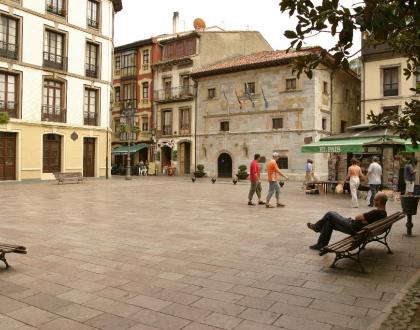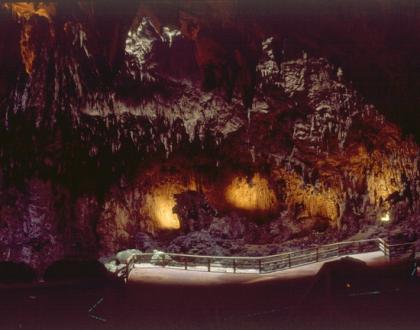Old village

Beschreibung
To find the oldest part of this village you have to stroll through the streets and alleys that are standing at the bottom of the hills, for this was Ribadesella’s original settlement. Walking along the Oscura street or climbing up Trasmarina alley you will get to El Portiellu quarter, a good place to start your visit. Always been a popular neighbourhood, El Portiellu represents the southern limit of the old village and, in fact, it is the natural entrance to Ribadesella. Its inhabitants usually came from the countryside; and so, the remains of rural life, with old stables and vegetable gardens, can still be discovered around.
Back to the village centre you will get to María Cristina square, where the Prieto-Cutre mansion stands. This interesting Renaissance construction is considered the oldest building in the village, and it currently houses the municipal district’s Town-Hall. Before getting to Santa María Magdalena parish church you’ll find the old market’s square. As the original centre of the old village, main bourgeois houses were built around this area during 17th and 18th centuries. Among them, the Ardines house, with a carved blazon, suspended balconies and a Baroque market arcade, is the best example. González Prieto house and Collado house in Manuel Fernández Juncos Street are remarkable as well. Collado house presents a magnificent crowned blazon on its façade. Curiously, this principal house was the birthplace of Darío de Regoyos –remarkable painter of the Avant-garde-, and the Uría-Aza brothers’ home, whose fresco painting masterpiece can be admire inside the parish church.
On the northern limit of the old village, Villar y Valle square boasts two Indianos' constructions: the Arechavala French house, and the wonderful Villar y Valle mansion, a magnificent neoclassical palace, in whose property a 19th century romantic tower raises as well. Two climbing roads go around this parcel: The one on the left is the starting point of the path that leads to the Virgen de Guía chapel, on top of El Corveru hill. And the slope on the right is the only access to L’Atalaya stony cove that is 100 m far.
Finally, walking from this square to the west, some of the houses surrounding the bay still conserve the atmosphere of the old fishermen quarter. Hidden behind them and hanging at the bottom of the rocky hill, pretty Santa Ana Baroque chapel can be found.
Two modern streets and the fishing harbour complete the 19th century expansion of the village. That’s why; today Gran Vía Street and Plaza Nueva square are the current heart of Ribadesella’s ordinary life.
Ribadesella’s old quarter is a rich ensemble of centenary traditional and bourgeois houses, popular squares, historic streets and tiny alleys, devised on its 13th century original settlement.
To find the oldest part of this village you have to stroll through the streets and alleys that are standing at the bottom of the hills, for this was Ribadesella’s original settlement. Walking along the Oscura street or climbing up Trasmarina alley you will get to El Portiellu quarter, a good place to start your visit. Always been a popular neighbourhood, El Portiellu represents the southern limit of the old village and, in fact, it is the natural entrance to Ribadesella. Its inhabitants usually came from the countryside; and so, the remains of rural life, with old stables and vegetable gardens, can still be discovered around.
Back to the village centre you will get to María Cristina square, where the Prieto-Cutre mansion stands. This interesting Renaissance construction is considered the oldest building in the village, and it currently houses the municipal district’s Town-Hall. Before getting to Santa María Magdalena parish church you’ll find the old market’s square. As the original centre of the old village, main bourgeois houses were built around this area during 17th and 18th centuries. Among them, the Ardines house, with a carved blazon, suspended balconies and a Baroque market arcade, is the best example. González Prieto house and Collado house in Manuel Fernández Juncos Street are remarkable as well. Collado house presents a magnificent crowned blazon on its façade. Curiously, this principal house was the birthplace of Darío de Regoyos –remarkable painter of the Avant-garde-, and the Uría-Aza brothers’ home, whose fresco painting masterpiece can be admire inside the parish church.
On the northern limit of the old village, Villar y Valle square boasts two Indianos' constructions: the Arechavala French house, and the wonderful Villar y Valle mansion, a magnificent neoclassical palace, in whose property a 19th century romantic tower raises as well. Two climbing roads go around this parcel: The one on the left is the starting point of the path that leads to the Virgen de Guía chapel, on top of El Corveru hill. And the slope on the right is the only access to L’Atalaya stony cove that is 100 m far.
Finally, walking from this square to the west, some of the houses surrounding the bay still conserve the atmosphere of the old fishermen quarter. Hidden behind them and hanging at the bottom of the rocky hill, pretty Santa Ana Baroque chapel can be found.
Two modern streets and the fishing harbour complete the 19th century expansion of the village. That’s why; today Gran Vía Street and Plaza Nueva square are the current heart of Ribadesella’s ordinary life.












